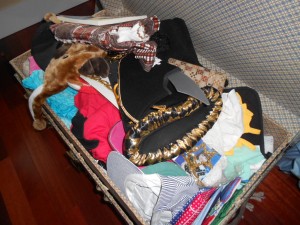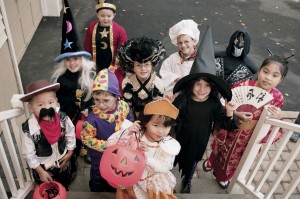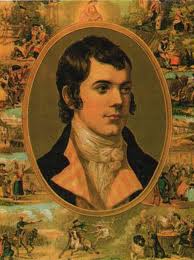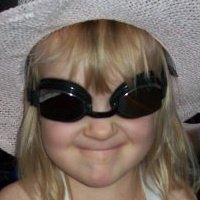The Magic of Dress-up Play
Instead of needing a magic wand to transform boys and girls into princes and princesses, fairies, knights, pirates, doctors, superheros, or other characters, kids only need a dress-up box. Ordinary, everyday objects add to the play as a paper towel tube becomes a sword, a stack of bottle lids counts as pirate treasure and an old t-shirt has new life as a super hero cape.
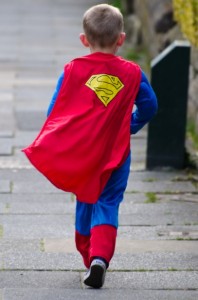 Dress-up play has an important role in the magic of childhood. Children need to explore the range of ways that we relate to others: as the boss, the mommy, the daddy, the baby, the doctor, the patient, the store clerk, the shopper, the telephone answerer, the restaurant sever, the eater, the customer and more. What does it feel like to giver orders? Or, to be responsible for the care of others? While kids do not always use dress-up props as they play, they often put on some type of clothing to mark the change as they try out new ways of interacting.
Dress-up play has an important role in the magic of childhood. Children need to explore the range of ways that we relate to others: as the boss, the mommy, the daddy, the baby, the doctor, the patient, the store clerk, the shopper, the telephone answerer, the restaurant sever, the eater, the customer and more. What does it feel like to giver orders? Or, to be responsible for the care of others? While kids do not always use dress-up props as they play, they often put on some type of clothing to mark the change as they try out new ways of interacting.
Emotions are part of the human package and learning to control them needs experiences. Dress-up is one way to explore feelings, such as fear in a robber scenario, or anger when the friend playing the doggie pretends to break something, or happiness when being rescued by a hero. Emotions get tried on for size like articles of clothing.
Kids also need to test their own abilities. What’s the difference between super powers and regular ones? After all, to a child, if we can turn on a light by touching a certain place on a wall, why can’t we fly by jumping off a table? As superheros, kids practice what they have learned about their abilities and limitations.
Childhood can be magical and magic does exist as part of dress-up play. Does your child like to play dress-up? Could it be today’s play-of-the-day?

